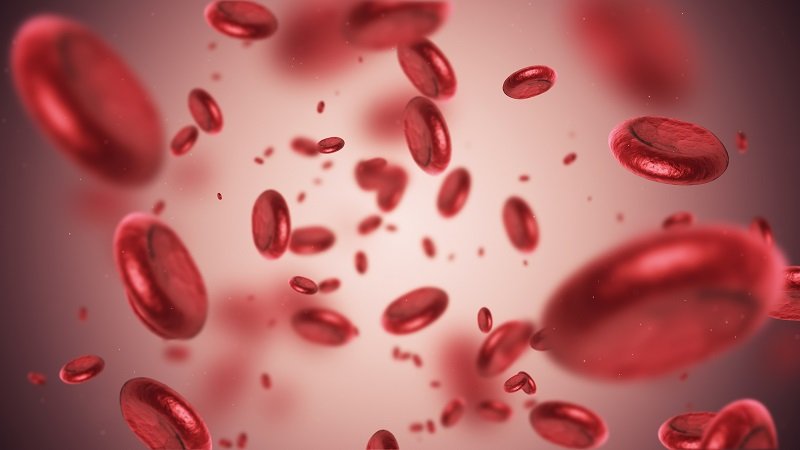Does your loved one look pale, have frequent spells of dizziness, and complains of fatigue all the time? It could be that they are anemic. Anemia is a pretty common condition among seniors and whose prevalence increases with age. According to studies, nearly 10% of seniors aged 65 and over are reported to be anemic and the number doubles for seniors over 85.
It is unfortunate that anemia in seniors is often undiagnosed and untreated until it is fatal because the symptoms are often confused with those of aging. As a caregiver, you have to be extra keen on your loved one so that you can immediately pick symptoms of them being anemic. In this article, we will educate you on what symptoms to look out for, the causes of anemia as well as the available treatments. We will also define what anemia is and what levels to check out for.
Keep reading…
What is anemia?
According to WHO, a person is considered to be anemic when their hemoglobin level is lower than normal. A normal hemoglobin level for adult women is between 12.1 to 15.1 g/dL (grams per deciliter) while for adult men it is within the range of 13.8 to 17.2 g/dL. A person with any level below these ranges is considered to be anemic. To determine whether your loved one is anemic or not, a clinician will test for their hemoglobin levels and if they are significantly lower, a CBC test will be required.
A CBC test is a comprehensive collective test that usually includes:
- Red blood cell count to determine the number of red blood cells in every microliter of blood.
- White blood cell count to determine the number of white blood cells in every microliter of blood.
- Hemoglobin to determine the number of grams present in a deciliter of blood.
- Platelet count to determine the number of platelets in every microliter of blood.
- Hematocrit to determine what fraction of blood made up of red blood cells.
- Mean Corpuscular volume to determine the size of red blood cells. Larger than normal red blood cells are said to be microcytic, normal size is said to be normocytic while smaller than normal size red blood cells are said to be macrocytic. The abnormal size of the red blood cell is an indicator of an underlying condition that is causing the anemia.
What are the symptoms to look out for?
Most people will have mild anemia at some point in their lives. Mild anemia is where the hemoglobin level is not alarmingly low and as such, one may not show any symptoms, and if they do they may not be noticeable. This is because a body has the ability to adapt to lower hemoglobin if the levels drop over a long period of time, say weeks or even months. Some of the most common symptoms of anemia include:
- Fatigue
- Dizziness
- General body weakness
- Shortness of breath
- Paleness
- Frequent headaches
- Low blood pressure
- Tachycardia (rapid heartbeat)
These symptoms may be severe depending on how far below the normal hemoglobin level one has and how drastic the level dropped.
What causes anemia in seniors?
There are many causes for anemia in seniors and aging is not one of them as many have been made to believe. 8 out of 10 cases of anemia in seniors are triggered by an underlying condition. The common causes include:
Anemia of chronic diseases
ACD, Anemia of Chronic Disease, is one of the most common causes of anemia in seniors over 65 years of age. With ACD, one has low levels of red blood cells because of chronic infections and autoimmune diseases. Chronic diseases are illnesses that last longer than 3 months. These chronic diseases alter how the red blood cells function. They either cause them to die faster or slow down their production in the bone marrow. They also impair the way iron is metabolized in the cells. Also, the medication or multiple medications that are taken to cure or manage the chronic diseases may be suppressing the bone marrow hindering it from incorporating the iron into the red blood cells.
Iron deficiency
Iron deficiency closely follows the anemia of chronic disease as a common cause of anemia in the elderly. Iron deficiency can occur either because an elderly is not taking enough iron-rich foods or the iron is not being absorbed into their body. It could also occur as a result of chronic blood loss due to other underlying conditions such as ulcers, cancer, or even gastrointestinal tract conditions.
Vitamin B12 deficiency
Vitamin B12 deficiency is pretty hard to detect in seniors and its prevalence could be higher than what studies suggest. Studies show that 5 to 10 elderly people suffer from anemia caused by a lack of vitamin B12. Unless your loved one is a strict vegan, chances of them having inadequate intake are lower so the most probable cause is that their absorption has reduced.
Folate deficiency
Folate deficiency is almost always a dietary concern. If your loved one is not taking foods rich in folic acid then that is the cause of their anemia. Folate deficiency can cause either macrocytic or normocytic anemia. Just like vitamin B12 deficiency, folate deficiency is also not easy to tell unless an evaluation is done by a clinician.
Excessive blood loss
Aside from the above vitamin deficiencies and conditions, your loved one could also be anemic as a result of blood loss. If they recently had an injury that led to a lot of blood loss or has a condition that requires a lot of blood to be drawn out every so often then that could have led to their anemia.
How is the evaluation of anemia done?
Evaluation of anemia in seniors is done pretty much the same way as is done for younger people. Your loved one will be ordered to do a complete blood count. If there is a concern for an underlying condition, further tests will be carried out to determine the condition causing the anemia. These tests will determine whether there are any nutritional deficiencies, chronic infection, gastrointestinal bleeding, or malignancy. As discussed earlier chronic diseases are among the major causes of anemia.
Once your loved one has been confirmed to be anemic, it is important that you find out
1) how severe or mild it is,
2) what is causing the anemic and
3) how progressive the condition is or has been.
Finding out how severe the anemia is will determine how fast you need to get them treated. If the case is a mild one then you will need to make adjustments to their diet. If the anemia is a result of other underlying conditions then it would be also important to know so that the condition is treated to mitigate the anemia.
What are the available treatments of anemia in seniors?
Treatments for anemia vary depending on the severity of the anemia and the cause of anemia but generally they range from supplements, blood transfusion to surgery.
Supplements
Supplements are given for anemia caused by vitamin deficiency. If the anemia is caused by a vitamin B12 deficiency, then 647-1032 mcg per day should be enough to restore the HB level. If your loved one, however, has trouble absorbing B12 then a single dose of intermuscular injection administered every three months should be the next best alternative. As a caregiver, you can always give the injections at home. For iron deficiency, iron supplements along with iron-rich diet should be given. The same applies to folate deficiency. 5 mg of oral folic acid should be given daily. If your loved’s one’s anemia is as a result of chronic disease, the first step would be to either treat or manage the underlying condition.
Blood diffusion
Blood diffusion is often recommended for patients with excessive loss of blood. Losing excessive blood leads to severe anemia that could be fatal hence blood diffusion may be the last and only resort. For this treatment, the clinician will advise on how to go about it and how much blood your loved one will need.
Treating anemia with a proper diet
For mild to moderate anemia, it is always recommended that you boost the levels with a healthy balanced diet that contains all the recommended vitamins. The best foods for an elderly with anemia include:
- green leafy vegetables such as spinach, broccoli, kales, swiss chards, red and yellow peppers and so forth;
- fruits such as beetroot;
- plant proteins such as beans and pulses;
- lean meat and liver;
- nuts such as cashews, pine nuts, peanuts;
- seeds such as pumpkin seeds;
- fortified cereals.
It is, however, important to note that while some foods may be healthy, they may hinder the absorption of iron. As such, try and avoid foods high in calcium when taking food rich in iron. For instance, when taking a meal with spinach, avoid drinking milk.
Other foods to avoid include:
- tea and coffee;
- dairy products and milk;
- some whole-grain cereals;
- foods that are rich in gluten and those made with barley, rye, oats, and wheat;
- foods that contain some oxalic acid like chocolate and parsley.
To maximize the absorption of iron avoid overcooking, try cooking your food for shorter periods instead. Also, combine iron-rich foods with those rich in vitamin C. Vitamin C promotes the absorption of iron.
Bone marrow transplant
Other treatments may include a bone marrow transplant and erythropoietin hormone shots to help stimulate your bone marrow to produce enough red blood cells.
Complications of anemia in seniors
According to new research by the National Institute of Aging, seniors with anemia are twice at risk of experiencing physical and mental declines. As a result, many elders with anemia end up hospitalized or admitted to nursing homes. If anemia is not treated on time, anemia could bring about serious complications as the heart is forced to work twice harder to maintain the oxygen levels. This could lead to either a rapid or irregular heartbeat and eventually a heart failure or an enlarged heart.
Untreated anemia also leads to severe fatigue which could make your loved one unable to perform their daily tasks. The dizziness could also be a health hazard as they can fall and injure themselves. Another study by the Canadian Medical Association Journal showed that elderly with anemia have an increased risk of death especially for seniors aged 85 and older.
Conclusion
Anemia in seniors is pretty common yet it’s not something most caregivers think about because they focus mostly on more serious conditions like dementia. Well, we can’t really blame them as the symptoms of anemia are pretty much what any senior would complain of every now and then and is presumed to be a result of aging. While its a fact that age increases their risk of becoming anemic it certainly is not a cause. The most common cause of anemia in seniors is underlying chronic diseases and this is why caregivers and family should be cautious of any symptoms of anemia and have their elderly tested as soon as possible. We hope you have learned a lot about anemia in seniors and you will be keen on your loved one’s hemoglobin levels henceforth.























